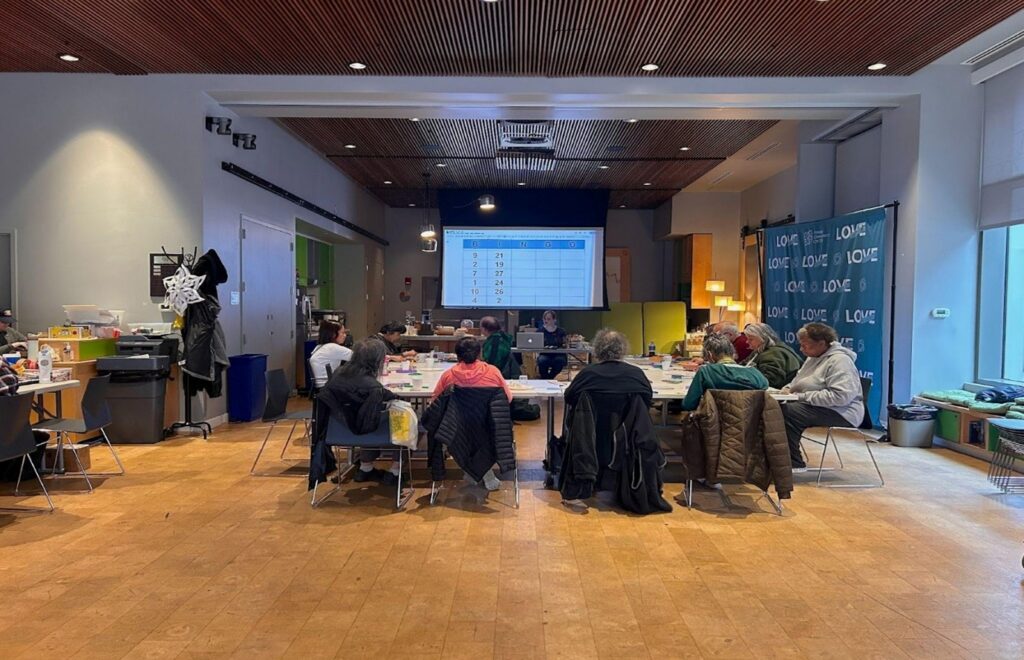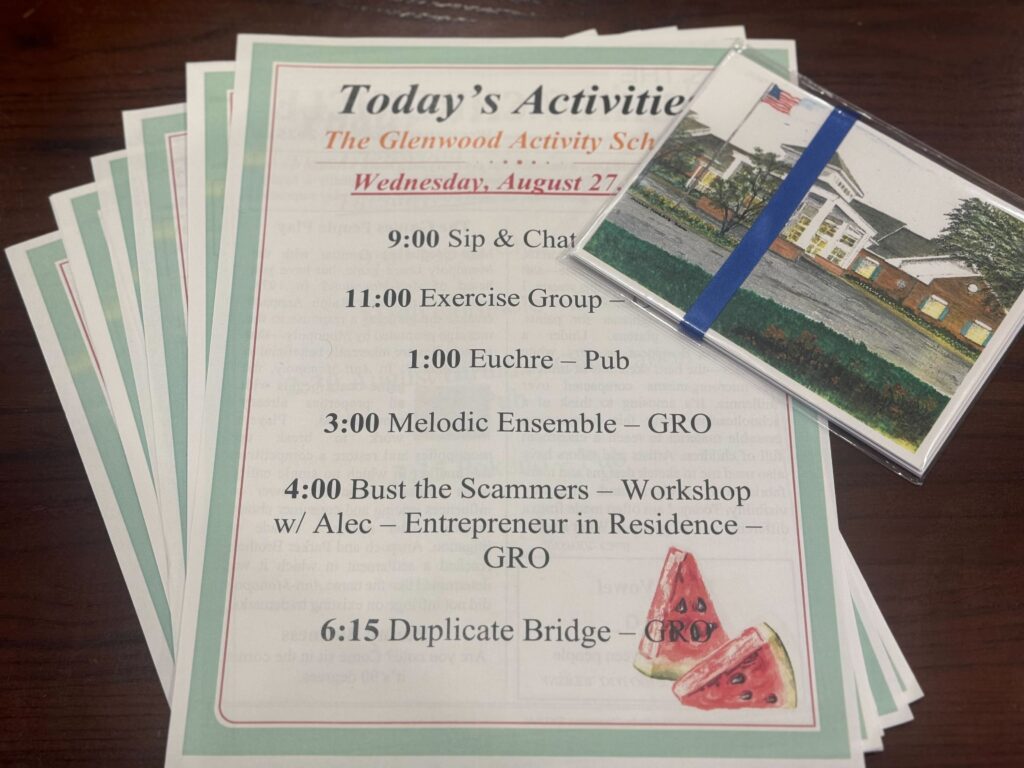Abstract
Older adults, their families, their communities, and public health and social services agencies share the desire to enable individuals to age in place (Malani et al., 2024). Over the past 25 years, nonprofit virtual villages have emerged as important contributors to this goal. However, they are under-resourced to meet their potential, lack data capacity to demonstrate their value, and are not equipped to support individuals needing health or social services. Artificial Intelligence (AI) can help address these challenges and fulfill the potential of virtual villages. However, villages should not embrace it hastily or uncritically.
Key Words
aging-in-place, volunteer villages, older adult programs/services, social isolation, nonprofit organizations
Aging-in-place villages are not brick-and-mortar residential communities. They are grassroots, volunteer-driven, community-based organizations, and they are often hyper-local. They offer simple services, foster social connections, and address the social determinants of health to help older adults remain in their homes and thrive in their communities as they age.
Villages are usually founded by members of a community, and each village develops an organizational structure and offerings based upon that community’s needs. A significant number have no formal members, offering programs and services to anyone in that community. An increasing number are intergenerational, strengthening community bonds across age groups (Andersen, 2025, Jewish Council for the Aging, 2024).
Village “members” pay dues—often low or subsidized—and are eligible for programs and services (for simplicity, this article uses the term “member” to include participants in member-based and non–member-based villages, unless the distinction is important to the context). Some membership villages open specific activities, such as educational programs or COVID vaccine clinics, to their entire community. Some villages provide events and services, mostly via volunteers, while others may focus on either social activities or services and referrals.
‘AI can assist in proposing social and educational
events or new services by analyzing
surveys of member priorities.’
Villages are diverse in terms of resources, structure, membership size, and capacity. They range from volunteer-led efforts to professionally managed entities, but only about half of villages have any paid staff (Village to Village Network [VtVN], 2020). Newer models include sponsored villages with a parent organization and those organized as central hub-with-spoke villages.
Despite such differences, villages share two characteristics: a mission to strengthen social connections and “neighbor helping neighbor” services, and they are under-resourced to meet their potential. Few are equipped to collect and report data about their activities that could showcase their contributions not only to their members and communities but to public and private services and funders. Also, as the proportion of “older old” adults (older than age 75) increases, villages will need additional capacity to be effective interfaces to the higher health and social services needed.
Villages Data Collection and Reporting
Reflecting their diversity, villages employ varied tools and methods to track services, events, memberships, and volunteer contributions (Andersen & Deering, 2025). Almost all are seriously limited in their ability to collect and report on the data that is so important to demonstrate their value to members, communities, and wider public policy interests. The limited research available has shown positive impacts on villages improving members’ quality of life, confidence in their ability to age in place, and health outcomes (Graham & Guzman, 2022; Graham et al., 2017). Villages report that limited staff, time, and funding are the major barriers to data collection and reporting (Palmiru et al., 2024).
Villages and the Larger Health and Social Services Ecosystem
Villages partner with a range of organizations, such as service clubs, cultural centers, faith-based organizations, and local businesses, for programming, venues, and other resources. There are notable partnerships with Area Agencies on Aging (VtVN, 2022) and other organizations in the aging services network to help older adults access necessary support. While most villages already provide non-medical services, such as transportation, pick-up and delivery of prescriptions and groceries, and social engagement, including events, interest groups, friendly visits, and check-in calls, many find a need to give members more help connecting to government services, healthcare providers, and other care navigation (Garrett et al., 2023).
How Might Artificial Intelligence Help?
Villages all face, to some degree, challenges that are common to nonprofit, community-based organizations. There are numerous reports on how AI could potentially help nonprofits, but none specifically refer to entities like villages. Many village issues can be helped by AI capabilities already in use elsewhere.
Leadership
Identifying, recruiting, and retaining leaders is often the greatest pain point for villages, and can determine the health and sustainability of the organization. Villages struggle with this repeatedly, because what they need from their leaders is usually much greater than the resources and rewards they can offer.
- AI can be helpful with the first two steps. AI’s writing capacity can help draft the position description and messaging for recruitment, tailoring them as needed. When given a detailed description of the village (mission, scope, activities, etc.) and position requirements for skills, experience, and geographic and other factors that might be important for a good match, AI’s search capacity can look at resumes, LinkedIn, and other social media sources of work experience to generate lists of potential candidates.
- AI can review member participation to identify individuals who could be candidates for various leadership positions.
- AI might not play a direct role in retaining good leaders, but it can reduce some factors that lead to turnover by lessening management burdens and facilitating fundraising and grant-writing (see below).
Governance
Policies and procedures are just the beginning of good governance. It must also include setting the vision, mission, and core values to support a thriving organization.
- AI’s research capacity can help identify the elements of good governance. When given a detailed and honest assessment of the village’s purpose, scope, and activities, AI can return a description of “good governance elements for an organization like mine.” It also can identify organizations that offer resources like workshops or mentoring on governance for nonprofits.
- AI can find relevant examples of policy documents—articles of incorporation, bylaws, mission/vision statements, etc.—and can draft initial texts customized to the village’s characteristics.
Operations Management
Regardless of size, all villages must manage their processes, members, programs, and services offered.
- AI can facilitate meetings by generating notes with summaries and follow-up assignments.
- AI can automate data entry from diverse forms, documents, emails, and other sources, and can integrate and analyze it for specific purposes.
- AI can facilitate community-needs assessments by analyzing data from many sources, such as social media, the U.S. Census and other government databases, community surveys, etc., to identify local issues and capacity.
- AI can assist in proposing social and educational events or new services by analyzing surveys of member priorities or searching “emerging issues for older adults.”
- AI can suggest social events/activities and/or educational topics, leaders, or speakers; AI also can identify potential local venues and propose and develop draft communications. In the era of agentic AI, village leaders can task AI with more mundane activities, such as automatically scheduling thank-you emails, renewal notices, or village updates.
- AI can help identify services that are pertinent and feasible for the village, based on member profiles and available volunteers; help maintain the service-request platform; match volunteers to requests; and track request fulfillment by service, by member, and by volunteer. AI can offer institutional knowledge for villages that are often challenged by leadership turnover.
Membership
Whether villages seek to recruit people for formal membership or not, they must all proactively reach out to their communities to identify and attract people, create a welcoming environment, sustain their interest, and maintain positive communications.
- AI can use predictive analytics to look at census and other community data to find areas with higher concentrations of adults in target demographic groups who might enjoy and benefit from being in a village.
- AI also can identify local organizations likely to include people in their target demographics, for example faith-based organizations, senior centers, and civic associations, which could be good places for outreach and marketing.
- AI’s content-creation abilities can be applied to recruiting and retaining members (see communications and marketing below).
- AI can help analyze villages’ member databases for clusters of characteristics that might suggest a new interest group, educational program, or service.
Volunteers
Volunteers are the life blood of any village. Villages need to recruit new volunteers, not just at start up but on a continuing basis as initial volunteers “age out.” Many AI programs related to recruiting and retaining volunteers are similar to those mentioned above for leadership and membership. AI volunteer assistance includes the following:
- AI can help identify good community or online resources for training volunteers and draft customized messages and materials for the village.
- AI can help track and analyze volunteers’ services, to see if individual volunteers prefer specific services, and to create reports on volunteer hours, by service, and in total.
- AI can suggest examples of successful volunteer-appreciation activities and draft messaging and awards.
Marketing and Communications
Villages need to reach and effectively communicate with a variety of audiences for a variety of purposes: to recruit and retain people as leaders, members, and volunteers; to promote their programs and services; to showcase their contributions to their communities and larger audiences; and much more (see also fundraising and grant-writing, below).
- AI can help draft marketing and communication plans, based on input about the target audience and the village’s characteristics and goals.
- AI can draft content in multiple media for target audiences for everything from recruitment to advocacy.
- AI can learn a village’s “brand” (logo and other visuals, mission, activities, contributions) and draft “branded” written and multimedia marketing materials.
- AI can be asked to identify organizations and other resources to help with marketing, communications, and engagement: research, case studies, practical advice for specific challenges, best practices, free courses, templates, blogs, and much more.
- Generative AI tools, such as chatbots, also can provide an interface for any of the village stakeholders. In this scenario, the AI is given documentation (e.g., charters, business plans, and other historical documentation) and provides answers to anyone based on simple prompts. Importantly, AI chatbots for this purpose can be “fine-tuned” based on more age-friendly and age-aware knowledge bases, something that this issue’s editors have discussed with ASA as an important step to reduce ageist biases in mainstream AI tools like ChatGPT.
Fundraising
The most successful fundraising, from donors or grant sources, comes from finding good matches for the village’s mission, scope, capacity, services, members, and priorities. These and other key village parameters should be part of the AI inquiry to identify high-potential funding opportunities.
- For business support, villages should consider looking for partnerships, not just donations. They can search for companies in local ZIP codes whose products or services are relevant for their members or which have supported activities that could benefit their members.
- For grants, AI can be asked to identify not only relevant issues/purposes supported by a grant source, but details such as eligibility, matching and reporting requirements, length of grants, types of resources supported, exclusions, and other application guidance. AI can then suggest projects tailored to specific funders, identify research and other elements to include, and prepare first drafts.
- Demonstrating results is important for villages to secure and retain funding for the organizations. AI tools, such as those created by Explore Digits, can create charts, graphs, tables, and other visualizations based on the data villages collect so the results are easily interpreted. This reduces the time spent by village leaders and volunteers to organize, analyze, and report on their results (this is discussed more in the next section).
Data for Operations, Reporting, and Measuring Impact
Documenting villages’ activities can help leaders look for ways to improve or streamline programs and services. The regular, standardized collection of data about villages’ activities, members, and outcomes can be especially important for individual villages and the broader village movement to demonstrate their value; increase funding from donors and public and private grant sources; and help integrate them into the broader social and health ecosystem.
- AI can take in, clean up, and synthesize raw data from many sources, including Customer Relationship Management (CRM) and other village management platforms, websites, apps, communications, surveys, and field data. It can identify missing or potentially incorrect data points through predictive analysis.
- AI can analyze data on members, volunteers, volunteer hours, services, and program offerings and help draft required funder reports. It can draft reports in quantitative and qualitative formats (natural language summaries, charts/tables and other visuals).
- AI can help measure impact by synthesizing data from disconnected sources (surveys, databases, web-use statistics), and deriving key metrics, trends, and other elements to highlight outcomes.
Note: As villages’ data collection and reporting increases, they need to develop robust data governance: rules for privacy, security, additions/deletions, authorized access and permitted uses; and to address cybersecurity threats. They should consult professional companies in this field.
Assisting Frail, Vulnerable Adults
Villages members may need a wider and higher-level set of services than the village and their volunteers can offer. Whether due to a medical crisis, such as a fall or surgery, or declining health, these needs require more specialized skills and resources from social and/or medical services.
- AI can help the village prepare for these circumstances by identifying community resources for helping individuals in need of health or social assistance and drafting contact lists, tailored messages, and other materials for the village team and for the members and their families.
- AI tools can facilitate smoother information-sharing between villages, AAAs, and healthcare providers, helping members receive seamless care, while maintaining privacy and independence.
- AI can help village members develop individual emergency-preparedness plans to be shared with the village, including family and medical contacts, using information gathered from the member with contacts for relevant services.
- AI tools can analyze member databases to identify individuals at risk for adverse events based on age or other factors (e.g., falls or medical events) or on evidence of declining participation in activities.
- AI can identify members living alone who would benefit from extra outreach, such as a buddy system. AI-driven chatbots or virtual assistants could help reduce isolation by providing conversation and reminders for events and health-related tasks.
Caveats About AI
Villages should initially focus on high-value common uses, such as meeting summaries, research, and writing. They should start small and experiment with available free tools (Neumann, 2024). They should carefully review, correct, and edit all AI-produced drafts, as errors and omissions are common. For any desired output, the more detailed the information given, the greater the product’s value. Give the AI tool information about the village and the purposes of the AI request, and then ask it: “What are the best prompts to give you to produce [detailed description of what you want to get out]?” Experiment with different inputs and prompts for the same desired output to see what gives the best result. Ask for sources when the origin is important.
Future Opportunities for Villages and AI
National and regional leaders in the Village Movement should look for opportunities to collaborate on AI development to strengthen data sets and models and increase AI’s value for aging-in-place support efforts. Positive collaborations of nonprofit domain experts with diverse AI groups, data scientists, and data-sharing platforms can be very productive. Educational and training programs for villages should be developed, possibly in partnership with local, regional, or national technology companies.
Foundational Principle
In the end, even as AI and technology can be hugely helpful tools, the heart of villages remains their neighborly trust and human connection. Keeping personal relationships at the core will be essential.
Mary Jo Deering, PhD, is the former president and a consultant to Washington Area Villages Exchange in Alexandria, VA. She may be contacted at mjd@mjdeering.net.
Photo credit: Rawpixel.com
References
Andersen, D., & Deering, M. J. (2025). A framework for the Maryland Department of Aging to collect data from villages. Maryland Department of Aging.
Garrett, C., Lucero, E., & Ripps, V. (2023). Helping frail members [Conference presentation]. Joint VtVN and WAVE Conference, Silver Spring, MD, October 17, 2023.
Graham, C., & Guzman, S. (2022). The village model: Current trends, challenges, and opportunities. AARP Public Policy Institute. https://www.aarp.org/pri/topics/livable-communities/housing/the-village-model-current-trends-challenges-opportunities/
Graham, C., Scharlach, A. E., & Stark, B. (2017). Impact of the village model: Results of a national survey. Journal of Gerontological Social Work, 60(5), 335–354. https://pubmed.ncbi.nlm.nih.gov/28509628/
Jewish Council for the Aging. (2024). Aging in place—The role of villages. https://accessjca.org/aging-in-place-the-role-of-villages/
Malani, P., Kullgren, J., Solway, E., Robinson-Lane, S., Singer, D., Kirch, M., & Smith, E. (2022). National poll on healthy aging: Older adults’ preparedness to age in place. Institute for Healthcare Policy and Innovation.
Neumann, A. (2024). Empower your nonprofit: Simple ways to co-create with AI for profound impact. Wiley.
Palimaru, A. D., Gittens, N., Chollampat, R. A., & Shih, R. (2024). Insights on developing research capacity for healthy aging with villages. RAND Social and Behavioral Policy Program. https://www.rand.org/pubs/research_reports/RRA3208-1.html
Village to Village Network. (2020). 2020 Village Characteristics Survey.
Village to Village Network. (2022). Leveraging resources handbook: Collaborations between villages and area agencies on aging.













